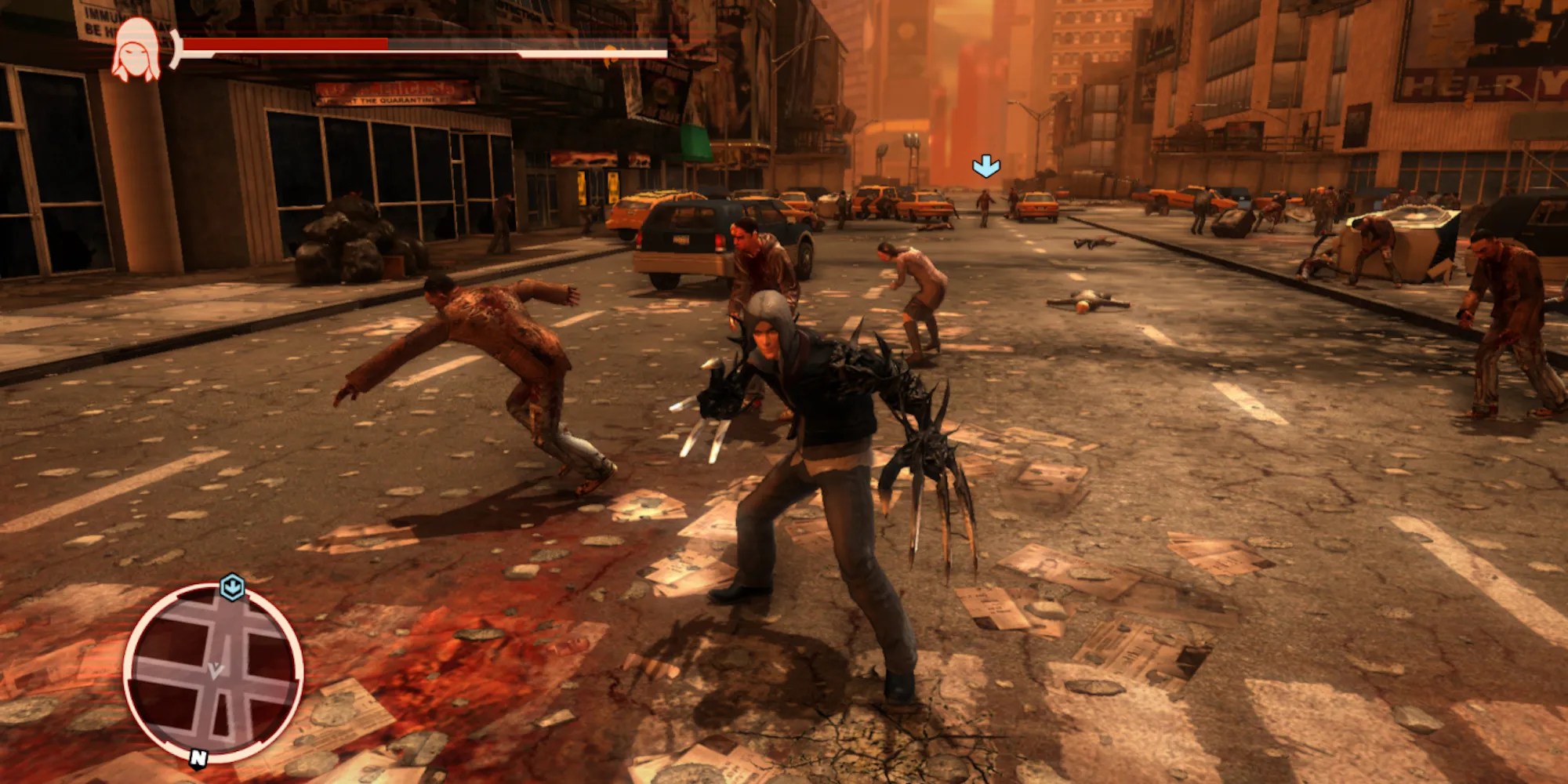Summary
Getting healed up in video games usually means getting downtime from the action, for example, taking five from sinew-splitting and eyeball-corking to walk off a cracked kneecap or having a little sit down behind a crate after accidentally stepping into the full spray of machine gun fire. While it doesn’t exactly takea realistic amount of time to mend, those precious seconds searching for health packs or waiting for regeneration to kick in can pull players straight out of the action, culling any killing momentum the narrative or level designers might have worked hard to build up.
Of course, beating enemies down to two booted, bloody stubs loses its sheen if players never feel in any danger of going down if any damage received is too light, but a total absence of health packs or health regeneration through long, arduous territory only encourages careful, conservative play, which is completely antithetical to the spirit of any action game. Thankfully, a handful of smart developers have devised clever ways to prevent players from losing their killstreaks because of some inconvenient scrapes or bullet wounds. How? By integrating healing as part of the cycle of violence.

2016’sDoomhas perhaps the most famous and influential example of the healing “glory kill” mechanic, which keeps the action flowing hot like lava from an active Martian volcano.Doom’s “push forward combat” arrived at a time when first-person-shooters were uniformly adopting regenerating health (anannoying mechanic that still persists in FPSs) and got other developers thinking about how to keep players feeling powerful and reckless without constantly throwing them out of their adrenaline-fueled rampage with a game over screen.
The premise of the mechanic is simple: the Doom Slayer, low on ammo and health, surrounded on all sides by crawling, craven abominations, opts not to run from certain death. Instead, he aggressively lashes out against those who stand against him. With a few tight shots, the Slayer stuns some of the weaker demons in his midst. Using his bare hands, he delivers a rush of carnage, personally ripping apart jaws, popping eyes, crushing throats, tearing chunks, and crumpling skulls. Out of their limp carcasses drop health orbs and bullets, with which therighteous conquest against Hellcan begin afresh.

Being the literal embodiment of warfare and bloodshed, it makes sense that Kratos would not only relish but thrive on dealing as much damage and destruction as possible.God Of War’s primary berserker healing mechanic is the perfect example of the phrase “violence begets violence,” as Kratos' “Spartan Rage” allows him to regain a portion of health roughly equal to the amount of damage he deals while pounding out opposing forces, allowing him to continue his campaign of destruction.
While he rages, Kratosforegoes the use of weaponsfor a more direct approach: his fists. Rage can be built up by taking hits in battle, making it an ideal way to get players into the mindset of an adrenaline-blooded god of vengeance and red-handed murder. Kratos can increase his rageful healing potency by collecting blood horns scattered across the realm of Midgard.

While there are other ways to heal inMetal Gear Rising, the main method is slicing up combatants with a “Zandatsu”(cut and take), then crushing their cybernetic spinal columns into health-restoring pulp. Apparently, this works because Raiden is repurposing the energy from their spinal power cells (for once,it isn’t just nanomachines) to fuel his own depleted batteries.
Reaching into a diced bad guy and tearing out their backbone for HP juice is awesome to behold, but it also incentivizes players to take on aggressive (and, of course, skillful) tactics. This is crucial asRevengeance’s cyborg ninja protagonist, Raiden, has a high damage output but a low damage threshold (which makes sense, considering he is up against other military-grade cyborg soldiers). This healing mechanic isn’t just for show but is fundamental in keeping the game’s action supercharged and razor-sharp.

“Hell is full, blood is fuel” isn’t just some evocative tagline inULTRAKILL; it’s an instruction to the player on how to keeptheir demonic murder robot, V1, well-lubricated while they proceed to gouge Hell of its precious red gold, which V1 extracts with extreme prejudice. When enemies are shot, exploded, or fist-plugged, they explode into a literal downpour of oxygenated red bodily fluid, which V1 drinks up through his metallic skin pores to top up his health and keep his motor humming.
The flow of action never stops between refueling as the sanguine splashes are absorbed passively after each and every kill. There’s no waiting for a glory kill animation to finish up, even for a nanosecond.ULTRAKILLplayers are incentivized to become more and more aggressive as the pressure piles on, as getting up close and personal increases the chances of being washed by a healing rain (of blood), putting them right back in the fight after getting a little dinged up by Hell’s denizens.

Seeing a New Yorker turned into red mist duringPrototype’s late game occurs with about as much frequency as spotting a hotdog stand or hearing “I’m walkin' here!” in its real-life counterpart. However, Blacklight-infected Manhattan is a dangerous place to be for anyone, even for a walking, stomping murder virus, like Alex Mercer. Thankfully, plenty of health packs can be found walking the streets, chatting on their cell phones, or waiting for their bus to show up.
Whether by bisection or deadly grapple, players can shake pink health clouds out of any living being they see, regardless of their status as a civilian, military fighter, or gurgling flesh monster. Gaining health by absorbing human beings inPrototypewasn’t just implemented as an afterthought. Maxing out Mercer’s “Stealth Consume” ability gives him the lethal finesse to push his finger against the vertebra of any NPC’s spine as if it were a doorbell, causing their insides to wither into delicious flesh and blood pudding,allowing Alex to enter their hollow skinsuitfor a quick patch up.